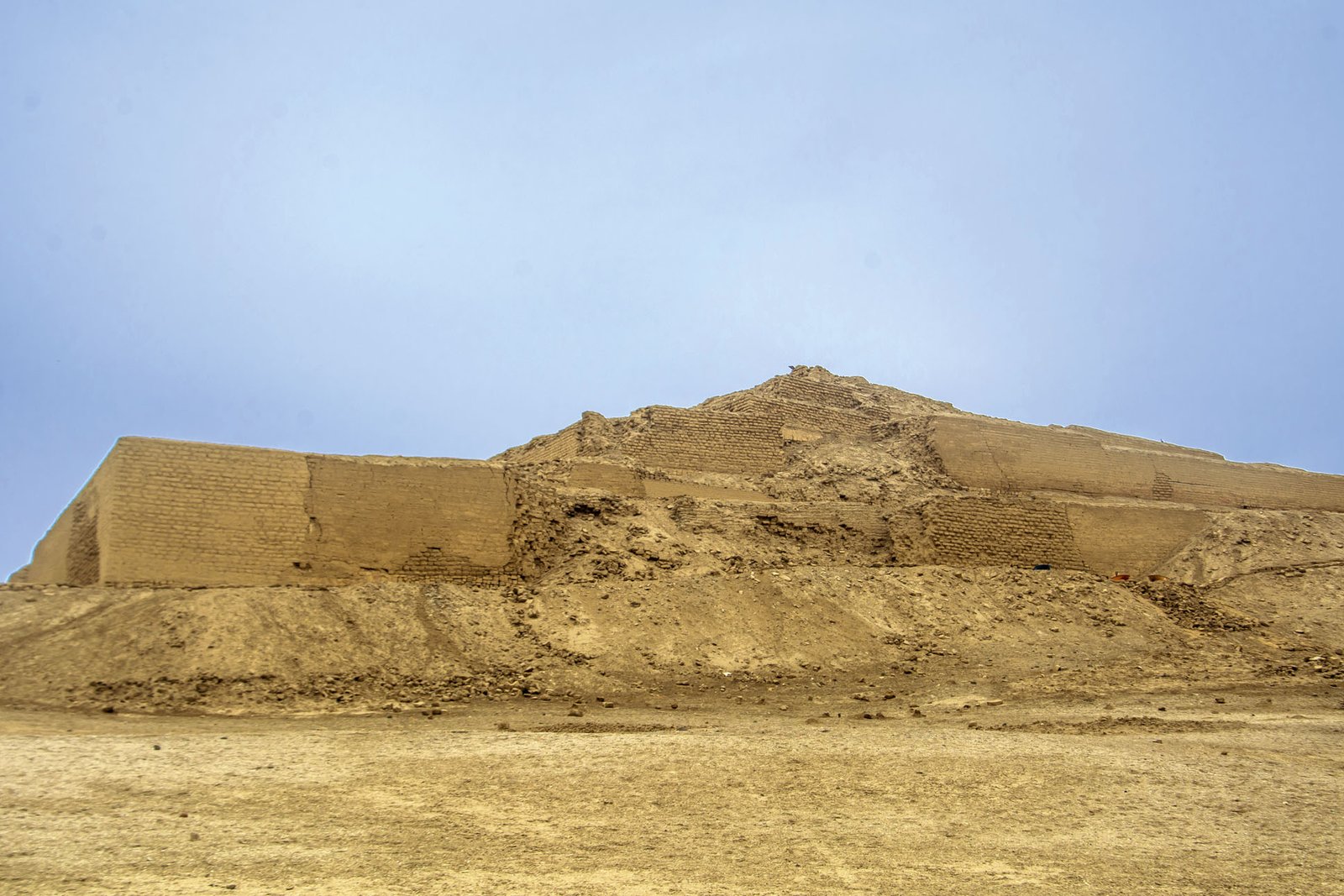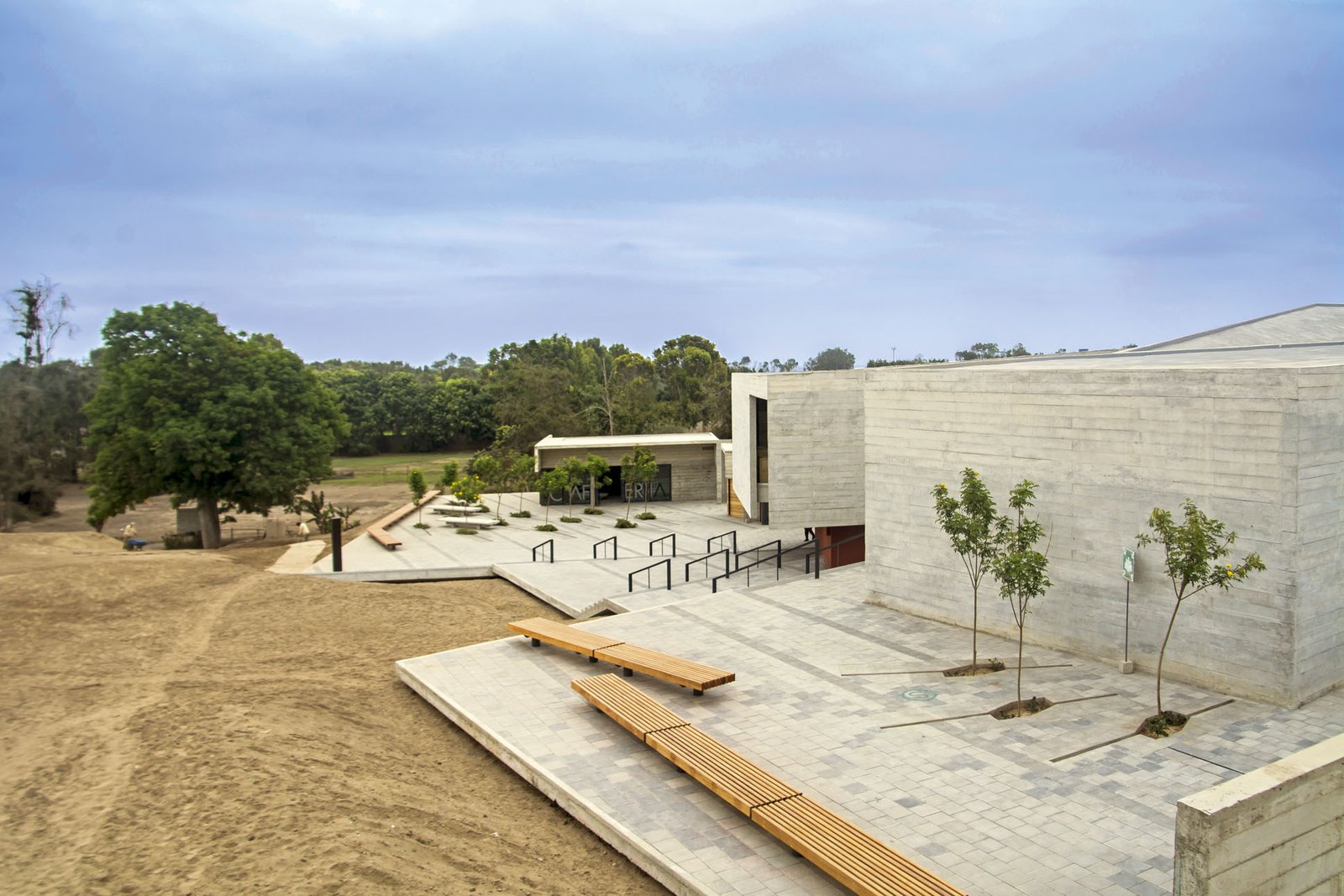
Pachacámac Two Thousand Years of History
Text and Photos: Javier A. Pinzón
Looking out the bus window in the middle of this desert land where everything looks gray, it’s difficult to distinguish the natural mountains from the archeological mounds. We approach Pachacámac, the city that, for more than 1,500 years, served as the principal shrine of the Andean Coast. I long to travel its roads, which transported thousands of pilgrims coming from all directions, from century to century, seeking advice and blessings. The first signs of the site date back to 100 A.D., and it’s still the largest and most important archeological complex in the city of Lima, covering nearly 1,150 acres.
First, I head towards the old temple, which is not yet restored, but I manage to imagine the imposing structure that the guide describes to me. It’s made with panels of small adobe bricks, arranged vertically inside the wall, like books on a shelf. This type of construction is typical of pre-Inca Lima culture; it is recognizable by its colorful sculptures of entwined snakes and fish.
The road takes me back in time once again, to around the year 650 A.D., when the Wari entered this shrine and built the temple of Pachacámac, a word that means “soul of the earth, which animates the world.” The ancient inhabitants of these lands believed that one movement of the deity’s head would cause earthquakes. One could not look him straight in the eye, and even his priests had to enter the site with their backs facing him. It was at that time that the shrine reached its first Pan-Andean splendor; the Wari and the Incas are the only two cultures in South America that are considered to have been empires. Only ruins are left of this temple, but it was once a splendid rectangular building, consisting of embankments almost twenty feet high, plastered with mud and decorated with anthropomorphic figures: fish, birds, and plants, painted red and yellow and outlined with black. At the end of the platforms was the chamber that housed the carved wooden image of the deity Pachacámac. The entrance to the temple is now restricted due to vandalism so I can only see a small sample of what once were the walls.

Continuing my route, I come across the Plaza de los Peregrinos (Plaza of the Pilgrims), for those who wanted to worship and give offerings to Pachacámac. It’s an enormous space, which allows me to imagine the large number of people who visited this shrine. Standing here in the middle of the square, I try to imagine I’m one of those pilgrims, waiting patiently for my turn to enter the shrine. The path I take is the north-south road that also takes me back a little further in time.
I find myself in the period ruled by the Ychma, who flourished after the fall of the Wari Empire (1100-1470 A.D.) and whose domain stretched over the valleys of Lurín and Rímac in a single political unit, with Pachacámac as its capital. I look around and see two pyramids with ramps. These pyramids are important architectural expressions of the Ychmas. The monuments have two basic characteristics: the massive use of “tapial” (meaning rammed earth) —big bars of tamped down adobe— and huge access ramps. I can fully appreciate these two pyramids thanks to their advanced state of restoration, but another sixteen such structures with ramps have also been identified. The walls that accompany both the north-south road and the east-west one give me an indication of the number of buildings constructed during this era. One hypotheses about the proliferation of these constructions suggests that each one served as a palace for a “curaca” (ruler). After the ruler’s death, the pyramid would become his tomb, meaning it was then closed to public use. Consequently, his successor had to build his own pyramid.

My trip back in time does not stop there. I’ve already seen evidence of three different cultures here and now I meet the last: the culture that the Spaniards had the privilege to see and the recklessness to destroy. I’m talking about the great Inca Empire (1470 – 1532), which established the most extensive rule in the history of Pre-Columbian America. Its territory was called Tahuantinsuyo (a word derived from the Quechua term Tawantin suyu, meaning “the four regions or divisions”). Legend has it that when he was still in his mother’s womb, Túpac Yupanqui was visited by Pachacámac, who revealed that he was the maker of the world below, and his brother, the Sun, was the maker of the world above. The god asked Túpac to build a house for him and one for each of his three children: one in Mala, another in Chincha, and another in Andahuaylas. He also had a fourth son, to whom he gave the task of looking after the Inca and acting as his intermediary. So when Túpac reached adulthood, he went to Pachacámac, fasted and prayed for many days in front of the temple and begged to be taken to Pachacámac. When he was finally before him, he kept his promise.
On the horizon, I can see this promise made into reality: the Punchao Court or Temple of the Sun. It’s a large trapezoidal building that sits on a very high natural promontory, with terraces and overlapping adobe platforms. This famous building used to be plastered with mud painted a red that is still possible to discern on some walls. The construction of the temple was one of the many changes that took place in the shrine during the time of the Incas, who were its last inhabitants.
I start my journey through the Inca period at the palace of the governor of the city, also called the Taurichumpi in honor of the last “curaca,” who lived there until the Spaniards’ arrival. This governor was responsible for overseeing the population and religious practices and managing and redistributing the valley’s assets and resources. I wonder how it was possible to manage such accounts without the use of a calculator or a simple sheet of paper and a pen. The answer can be found on the other side of the building, in the house of the “quipos,” where the Incan accountants employed an ingenious and accurate accounting and registration system. The “quipo” was the main thread from which others hung with systematically ordered knots, recording census information and maintaining statistical records.

I continue on my way and find myself facing one of the better restored buildings: the Mamacona or Acllahuasi, the female training center for the Inca empire. Here the “mamaconas” (teachers) instructed the “acllas” (chosen ones) in religious rites and the making of fine fabrics for the Sapa Inca and the nobility of Tahuantinsuyo. The acllas were beautiful maidens selected for the role upon reaching puberty. After a few years of preparation, they had to choose between being acllas of the Sapa Inca or acllas of the Sun. If they chose the first option, they could become the wives of important officials, powerful military chiefs, or the Sapa Inca himself. The latter consecrated them to religious service; these were the acllas that went on to become mamaconas.
I’ve almost reached the end of my journey. The mound I saw at the beginning of my trip is now my goal: the imposing Temple of the Sun. The path is a bit steep. The entrance here is restricted due to vandalism, but there’s a walkway that borders it. I keep wondering how they could have built such a structure, how many people must have worked on it, and how many were needed to fulfill the promise to Pachacámac. When I finally reach the top, I understand why this site was chosen. The privileged view of the sea and the valley place it in perfect harmony with the environment. Seeing the mountainous desert surroundings and the great greenery of the Lurín valley, where this shrine was built, I understand why this place has been a human settlement for so long. I can only sit and admire the sea and the two small islands peeking out of it. I read the legend of Cavillaca and Cuniraya and continue dreaming of this past.
